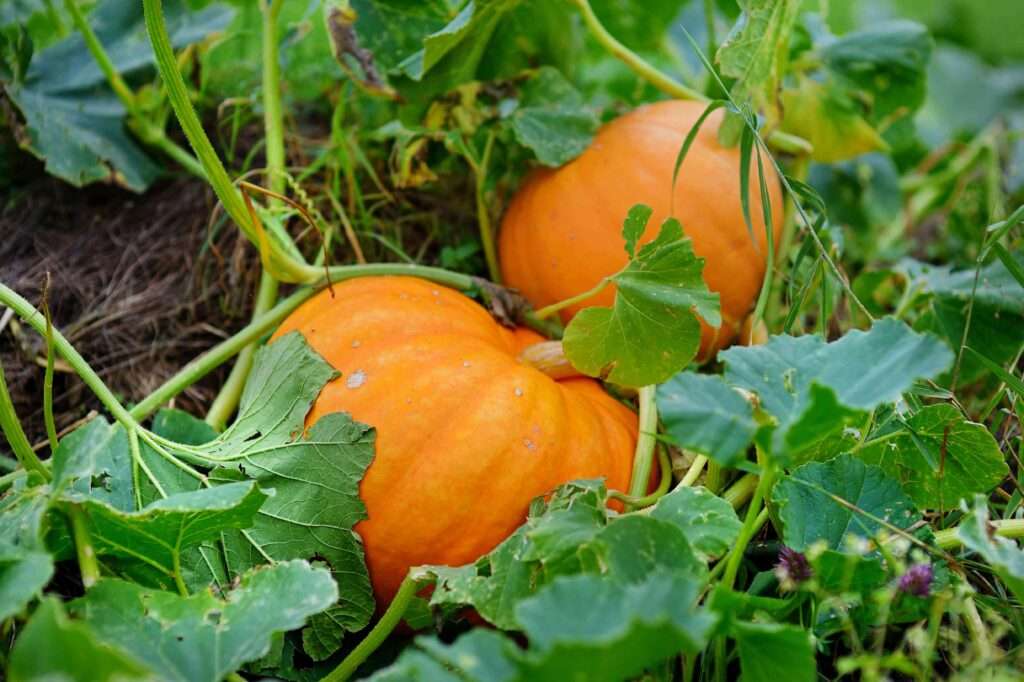
Description
Curbita spp., or pumpkin, is a plant that is widely grown in gardens across North America. It is a type of squash that, when used as an element in delectable holiday feasts or as a creative way to carve Halloween pumpkins, represents autumn. Although the majority of people associate pumpkins with big, spherical orange fruits with ribbed rinds, there are other varieties that can be white, red, pink, or blue in color, and their rinds can be smooth, bumpy, oval, flattened, or round.
Habitat
The states that produce the most pumpkins are California, Illinois, Indiana, Ohio, and Pennsylvania. Texas’ official squash is pumpkin.
Uses
Medicine is made from the seed and its oil. Intestinal worms, kidney infections, bladder discomfort, and problems urinating due to benign prostatic hyperplasia (BPH) are all treated with pumpkin. Pumpkin can occasionally be used to treat BPH symptoms in conjunction with herbs.

Varieties
Some types of pumpkin that work well in cooking are:
“Cinderella“: This variety got its name from the way it resembles the deep-ribbed pumpkin from the beloved animated film that changed into Cinderella’s coach. Its flesh is thick and custardy, making it versatile for a variety of cooking methods.
Lumina: The peel of this white pumpkin is great for carving as well as baking.
‘Sugar Pie’: With its delicious, finely grained flesh, this cultivar is great for pies. Soups and casseroles can also use it.
Some good carved pumpkins are:
‘Connecticut Field’: primarily cultivated commercially for Halloween. The weight of this typical orange pumpkin ranges from 10 to 20 pounds. Although it is not a particularly good pie pumpkin, its easily carved rind makes it a fantastic Jack-o’-lantern.
‘Jack-O-Lantern:‘ This kind, as its name suggests, has a thin rind that lights when a light source is inserted into the hollowed-out shell.
‘Howden’: This slightly longer type can weigh up to twenty pounds. Its flesh is suitable for cooking as well.
Novelty unusual pumpkins come in a wide range of variations, such as:
“Atlantic Giant” is a fantastic cultivar to try your hand at growing very large pumpkins. Pumpkins weighing more than a thousand pounds have been reported to exist.
‘Wee-Be-Little’: This tiny pumpkin grows on vines that resemble shrubs, about the size of a baseball.
“One-Too-Many“: This type has crimson veins running across its creamy skin. In addition to being a great pie pumpkin, it may be carved or decorated.
“Red Warty Thing“: The skin of this vivid orange-red pumpkin is covered with knobby growths that resemble “warts.” It works well for cooking as well as carving.
Plant Care
- Light
Pumpkins need full sun (at least six hours of light every day), just like other squash varieties, in order for their fruits to develop. Once a week or so, turn the pumpkins slightly to maintain symmetrical development. Take your time; it’s crucial not to break the vines.
- Soil
Rich, loamy, well-draining soil is preferred by pumpkins. It is advised to incorporate a significant amount of organic material, such as compost or peat moss, prior to planting. Soil pH should be between 6.0 and 6.8, which is somewhat acidic.
- Water
Growing pumpkins successfully mostly depends on providing them with an abundance of food and water, as both are necessary for producing huge fruit. When watering the growing vines, take care around them because they are rather fragile.
Water your plants thoroughly every week—at least one to two inches—especially during the flowering and fruit-setting seasons. Instead of watering from above, it is preferable to use drip irrigation or ground-level soaking.
- Temperature and Humidity
Pumpkins require heat, lots of it, to yield healthy fruit, just like any other squash. The ideal growing range for pumpkins is 65 to 95 degrees Fahrenheit. If you reside in a humid environment, you should pay special attention to your plants because high humidity levels can promote fungal illnesses when combined with heat.
- Fertilizer
Pumpkins require a lot of food to grow into enormous fruit and long vines. Give these plants fertilizer every two weeks. When the plants are around one foot tall, start using high-nitrogen fertilizers (10-5-5 ratio) to stimulate healthy foliage growth. To stimulate fruit development, switch to a high-phosphorus and potassium fertilizers (5-15-15 ratio) just before the plants bloom in the summer.
Table





